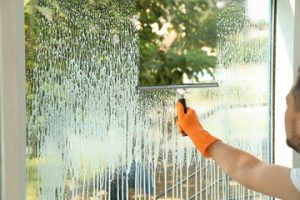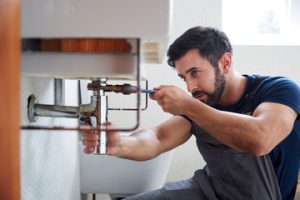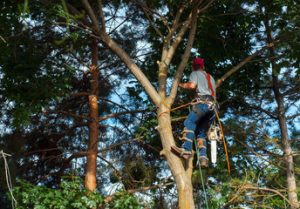Keeping your windows clean is an important part of maintaining the beauty and longevity of your home. Regular cleaning removes grime and environmental pollutants that can affect the functionality of windows and doors. Exterior Window Cleaning Service provides expert techniques and equipment for achieving sparkling clean windows. Understanding the various services, techniques, safety measures, and benefits of professional window cleaning empowers homeowners to make informed decisions about their home maintenance needs.

Cleaning windows is more than just a cosmetic process; it’s a preventative maintenance practice that preserves the integrity and functionality of window glass over time. Consistent cleaning can help to eliminate hard water stains, environmental pollutants, and debris that can lead to premature deterioration, deferring the need for costly repairs and replacements. Keeping windows clean also helps reduce indoor allergens and supports healthier air quality for building occupants.
In addition to using specialized cleaning solutions and chemicals, professional window cleaners employ specific techniques that ensure spotless results. They use a controlled and smooth squeegee motion to remove moisture, cleaning solution, dirt, and smudges from the window surface, leaving it spotless and streak-free. They also carefully wipe down corners, edges, and sills with lint-free cloths to remove any residual moisture and ensure a flawless finish.
Additionally, professional window cleaners can use a variety of tools to reach harder-to-reach areas. For example, they can apply a pressure washer or a water-fed pole system to reach high windows without the need for scaffolding. These systems are safe to operate when used by trained professionals.
Other important tools include squeegees, scrubbers, buckets, cleaning solutions, and ladders for hard-to-reach surfaces. For high-rise buildings, professional window cleaners can also use a rope access cleaning method that uses a harness and rappelling equipment to allow them to descend down the side of a building and clean hard-to-reach areas. This technique is highly effective and requires specialized training and equipment. However, it is an efficient and safe alternative to traditional scaffolding methods for reaching elevated areas. In addition, this type of cleaning allows for a more thorough cleaning than is possible from the ground or with standard window cleaning tools.
Safety Gear
Professionals use specialized equipment to ensure a streak-free finish that is also safe for their customers. This includes personal protective equipment, such as gloves, face masks, and eye protection, to prevent contact with cleaning chemicals or fumes; non-slip shoes to reduce the risk of falls when working on wet surfaces or ladders; and a squeegee with a rubber blade that provides a smooth, streak-free finish. It’s also important to select a squeegee that has a comfortable handle and is made of durable materials to prevent it from breaking or falling off during use.
Window cleaners must also wear a safety harness and rope system when cleaning high-rise buildings or other elevated surfaces, as well as secure the equipment to prevent it from moving or falling during the cleaning process. They should also take precautions when working in weather conditions, such as strong winds or rain, which can increase the risk of injury. If the weather is too dangerous for window cleaning, it should be postponed until conditions improve.
Additional essential equipment for cleaning windows includes a bucket for mixing water and cleaning solutions, one for rinsing, and a scrubber with washable microfiber or synthetic sleeves to keep it clean without scratching the glass. It’s also helpful to have a scraper on hand for stubborn or sticky residue, paint splatters, and other hard-to-remove substances. Lastly, a squeegee with removable rubber blades and a telescopic extension pole helps to reach higher areas that aren’t easily accessible from the ground. It’s important to regularly inspect and replace any tools that are damaged or worn down for safety and performance reasons. For example, a frayed cord on an electric tool can be hazardous and should be replaced immediately.
Extension Poles and Ladders
When cleaning windows that are high off the ground, specialized tools like squeegees and brushes mounted to extension poles are essential. Using these tools eliminates the need for ladders, which are unstable and pose a risk of falls, especially when working at significant heights. In more challenging scenarios, professional window cleaning services employ techniques such as water fed pole systems and scaffolding to tackle high-rise windows.
The most important tool for high-window washing is the telescopic pole. These extendable poles are typically capable of reaching 30 feet or more, allowing professionals to clean windows without the need for ladders. They are available in various lengths and materials, making them suitable for a variety of needs and applications. Professionals recommend choosing a durable pole that has secure locking mechanisms to prevent unexpected collapses.
Professionals also use a variety of tools to complete the cleaning process. These include brushes and squeegees that are compatible with extension poles, as well as specialized cleaners designed to cut through dirt and grime without leaving streaks or residues on window surfaces. It’s also important to protect surrounding areas from cleaning solution overspray by laying down drop cloths or other protective coverings.
Regardless of the tools used, it’s always important to work quickly and deliberately when cleaning high windows. Rushing through the cleaning process can result in missed spots and streaks. Additionally, it’s important to start at the top of the window and work your way down to avoid dirty water from dripping onto previously cleaned areas. Lastly, it’s helpful to work in sections to minimize the time spent on each section. This can help make the overall cleaning process more manageable and efficient.
Cleaning Solutions and Chemicals
Professional cleaning solutions are formulated to remove grime without leaving residue. These products are also safe for the environment and are typically derived from natural ingredients. Common chemical compounds found in these cleaners include surfactants, which help to dissolve oils and dirt particles so that they can be wiped away with ease. They are also effective at reducing water’s surface tension to ensure even coverage and minimize the risk of streaking or spots.
Isopropyl alcohol is a common ingredient in many commercial window cleaners because of its disinfectant properties. It is also a powerful degreaser and quickly evaporates to leave glass clear of streaks and deposits. Other commonly used chemicals in professional cleaners include glycol ethers, which have strong grease-cutting power and are less harsh than ammonia. Vinegar is a natural cleaning agent that is also included in eco-friendly and DIY window cleaners. It is effective at removing hard water stains and mineral deposits that can accumulate on windows, and its acidity helps to break down greasy dirt and grime.
For the most effective results, professional cleaners use a variety of tools that are designed for specific applications. For example, squeegees and scrubbers are ideal for residential and low-rise commercial properties, while telescopic poles and ladders provide stability and access to high windows without the need for scaffolding or ladders. Professional cleaners also bring along specialized equipment like water-fed poles, which have built-in filtration systems and can be used to deliver purified water directly to the glass surface.
Regular exterior window cleaning prevents long-term damage and maintains your home’s curb appeal. It protects glass from environmental pollutants and helps to preserve window frames, ensuring that seals and tinted windows remain intact. It also reduces your energy costs by keeping glass clean and free from dust and debris.
Equipment
A professional window cleaning service addresses more than just the glass; it also cleans the frames, sills and gutters to ensure a complete and consistent clean. Some cleaning services also provide specialty services for skylights, window screens and storm windows that require unique techniques and tools to keep them spotless.
A key to a successful window cleaning service is having the right equipment. This includes high-quality squeegees, scrubbers and scrapers, as well as a variety of professional-grade outdoor window washing products such as telescopic extension poles, lint-free microfiber cloths, durable window scrapers and reliable safety equipment. Investing in quality tools and ensuring that they are regularly cleaned, maintained and utilized is essential to achieving the best results and keeping customers happy.
Traditionally, exterior cleaning has involved using tap water and cleaning chemicals, buckets of water, ladders and a squeegee. While this is a basic approach, it has been replaced by pure water cleaning technology that uses advanced processes such as reverse osmosis and deionization to filter out microscopic impurities that cause unwanted spots and streaks on the glass. Combined with a powerful cleaning solution, this system creates an amazingly fast and effective clean for exterior windows.
To improve productivity and ensure that your team is ready for any job, stock your van or warehouse with a wide selection of cleaning supplies, including squeegees with replaceable rubber blades, scrapers with removable sleeves, lint-free microfiber cleaning cloths, a telescopic window cleaning pole for reaching taller windows, and safety equipment such as a harness, safety goggles and gloves. When paired with a field service management software solution such as Taskbird, this equipment can streamline scheduling and tracking for enhanced operational efficiency and growth of your window cleaning business.






